For over twenty years, a video game has tormented mums, dads and office workers the world over. And it has nothing to do with orcs, racecars or terrorists.
It’s about cards. That game is Windows Solitaire, which from Windows 3.0 through to the Windows 10 of today has been (excluding a short break with Windows 8) included free with every copy of Microsoft’s operating system.
Sure, there have been many other popular and important games included with operating systems over the years. Minesweeper will be many people’s favourite. Others will prefer pinball games, or even the great versions of Tetris that shipped with older versions of Windows.
But only one game can lay claim to having once been the most-used Windows application in the world, as Microsoft’s Chris Sells described Solitaire back in 2004. Considering the uncounted masses who use other Windows programs like Outlook, Word, Excel and Internet Explorer on a daily basis, both at home and in the workplace, that’s a frightening statement.
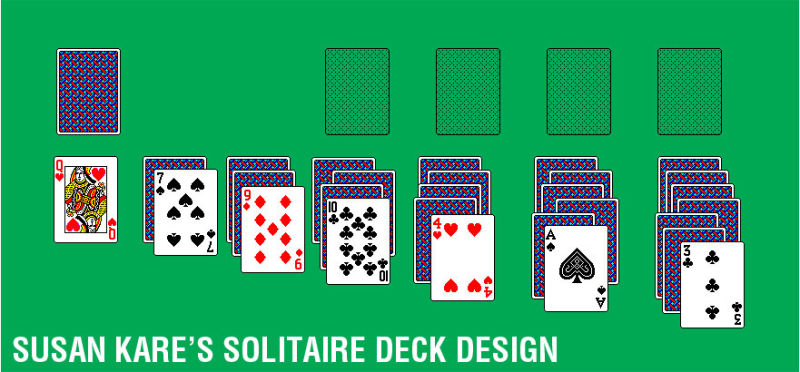
Before we go any further, let’s get something out of the way: the “Solitaire” included with every copy of Windows since version 3.0 of the operating system isn’t actually solitaire. There’s no such game. Instead, that’s a term given to a whole family of card games which allow a single player to cut a deck and methodically work their way through by sorting them by colour and/or suit.
The card game most people associate with Windows and solitaire is but one of many variants of the game, in this case Klondike. It was first included with Windows in 1990, with a deck of cards designed by, of all people, Susan Kare, who is perhaps best-known for having also designed the original (and still iconic) Apple Macintosh icon family.
The game itself was coded by a Microsoft employee by the name of Wes Cherry. Even then, during the game’s formative stages, Cherry knew the inherent potential (and dangers) for the game to become a workplace hit: he had originally coded a “boss key” into the game, which when pressed would instantly switch out the deck of cards with official-looking business, but Microsoft made him remove the feature before it was included with Windows 3.0.
Windows Solitaire, as it’s officially known, has been continually upgraded since, with new decks, new graphics and new rules added over the years (Vista and 7’s versions, for example, allow you to save an in-progress game). It’s still available today with Windows 10, albeit with some…caveats.
FreeCell, another popular Windows card game, has a colourful past of its own; despite its relatively late inclusion with the all-conquering Windows (it wasn’t included until 1995), it will be remembered as one of the first networked computer hits. Creator Paul Alfille put together a version of the game in the late ’70s/early ’80s that could support up to 1000 players at a time.
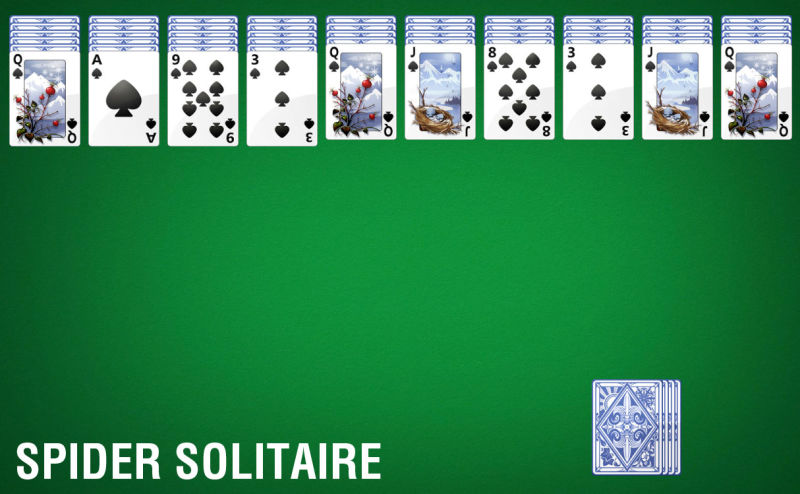
While Windows Solitaire has become almost synonymous with casual gaming and office time-wasting, Microsoft had a third, underlying reason for including the game with Windows: getting people comfortable with using both a computer and its own operating system.
It’s easy to forget now, but back in 1990, Windows was still a fairly new concept for a lot of people. So was using a mouse. Heck, the personal computer itself was new to many folks who had grown up using pens, pencils and typewriters. With its simple presentation, bright colours and familiar subject matter, Windows Solitaire was the perfect way for Microsoft “to soothe people intimidated by the operating system” and get them comfortable with using a mouse to point and click on things.
And get comfortable they did.
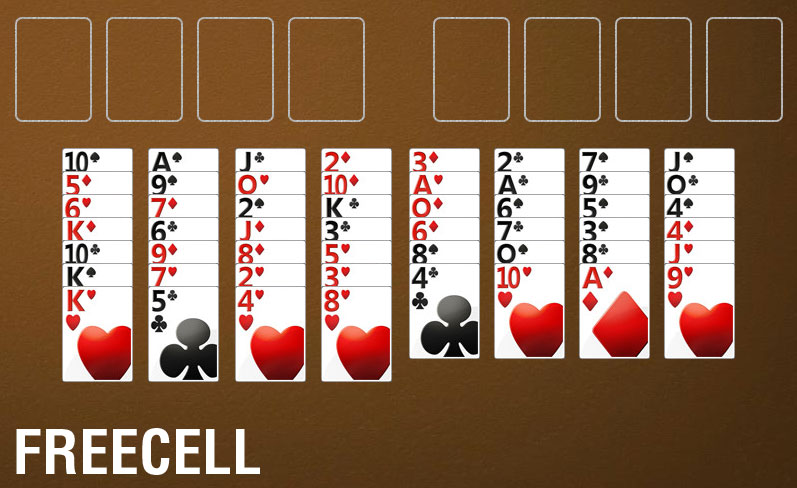
“Suppose a business said everyone on the sales force was getting a free deck of cards so that when they get bored they can play solitaire” systems manager Clifford Stoll told Time in 1998. “Not going to happen, right? But if you give everyone on the sales force a $2,000 computer, you know they’re going to play some solitaire because it’s the second or third most common program run.”
You mention Solitaire and — after the amazing end-game card haze — the first thing that pops into your head is that it was once seen as the single biggest threat to office productivity facing this planet’s workers. And in many regards, that’s correct.
Most people who have worked in an office can testify to the lure of the game, and could name one or two colleagues who spent a little too much time cutting the decks when they should have been filing reports. Some even take it too far; in 2006, New York Mayor Michael Bloomberg famously fired a city employee he caught playing the game while at work.
This addiction can even spread beyond the workplace and into people’s homes. My father has spent more time playing Freecell over the past decade than he has doing housework, for example. Things can get even worse for some: in 1996, Dr. Maressa Hecht Orzack opened the world’s first clinic for computer addicts as a response to her own chronic Solitaire addiction.
Yet things aren’t all bad for the humble little card game when it comes to the workplace. A University of Utrecht study from 2003 found that people allowed to play Solitaire while at work both improved their productivity and felt better about their jobs compared to those who were barred from playing. This was because if “rationed” correctly, a game of Solitaire functions much like a cigarette or toilet break, helping the employee take a short refrain from work, which refreshes them.
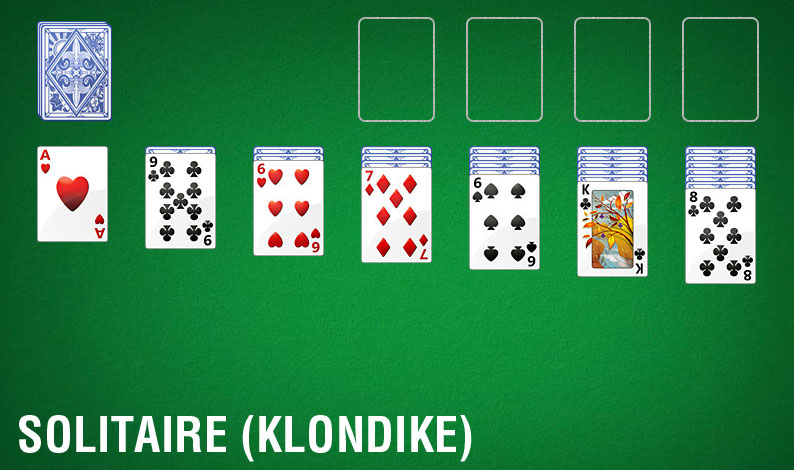
It’s funny that for such a popular and important game, few people know the names of those involved in its creation. And those creators have seen little to no reward or recognition for their efforts. Kare displays her design work on her personal portfolio site, yes, but nobody has ever heard of Alfille and perhaps saddest of all, because the game is included “free” with Windows and because he coded the game as part of his regular work duties, creator Wes Cherry has said he has not received a cent for his troubles, despite Solitaire being one of the most popular video games of all time.
Just as sad is the fact that Solitaire’s place atop the office time-wasting food chain has in recent years come to an end. Steam, the Xbox Store and Chrome Marketplace have eroded the need for Microsoft to rely on bundled software, while the population’s increasing familiarity with computers, Windows and video games in general means folks are more comfortable playing more abstract, complex games in their downtime.
On that note, then, let’s leave things on this rather poignant quote from Cherry, which puts into perspective the countless hours “lost” to the game over the last 25 years.
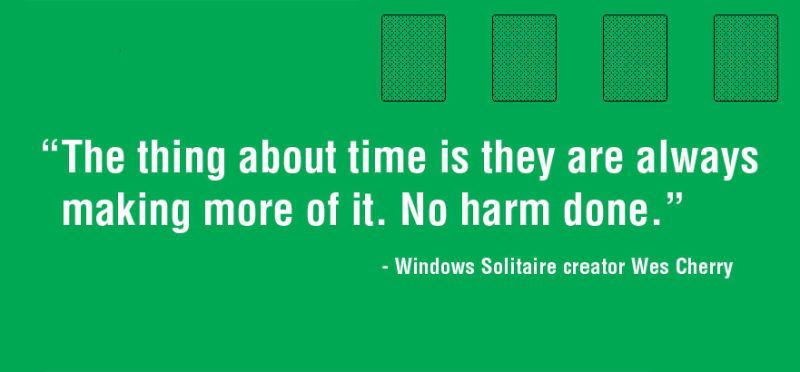
This story was originally published in October 2010.
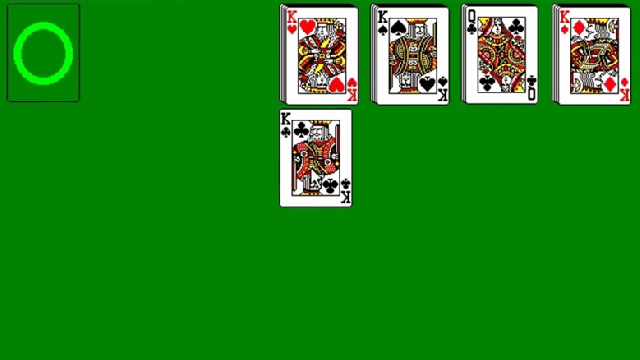
Comments
4 responses to “The Story Of Solitaire, One Of The World’s Biggest Video Games”
Man, there was a time I LIVED for that ending animation where the cards all bounce off the screen….
Also shows the inherent advantage any software has when it is packed in with an Operating System.
damn that build in calculator!!!
Did anyone else just go play solitaire a bunch having not played it in like 8 years?
I have the windows 7 version of solitaire and all other games on windows 10.
Played Hearts more than Solitaire.